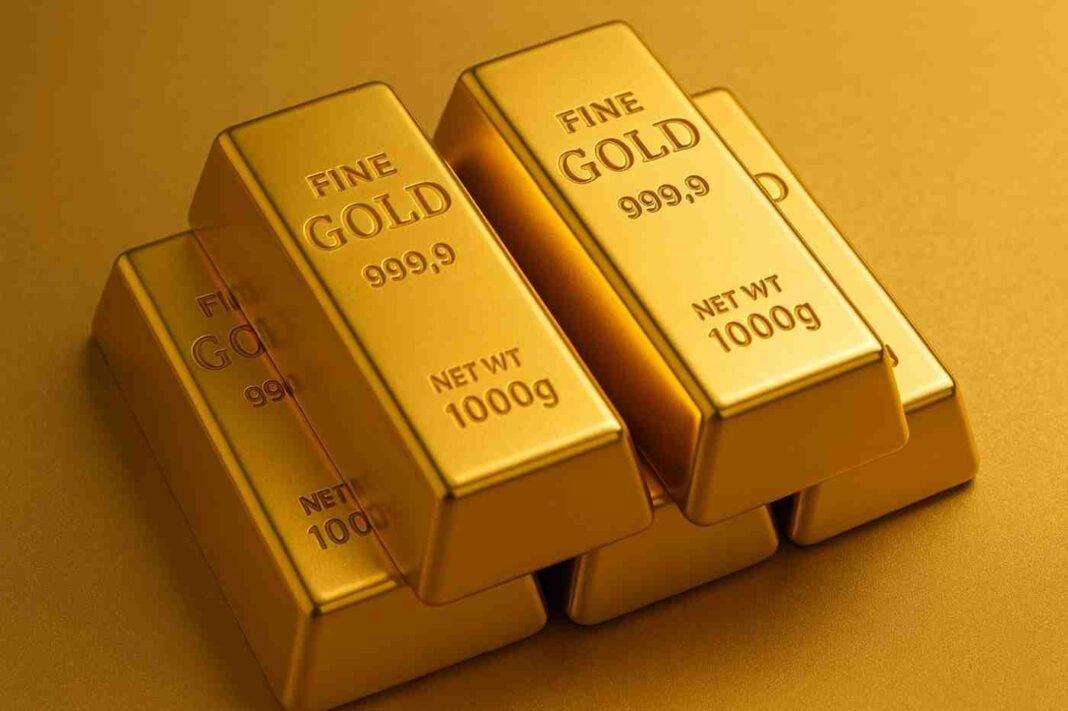Gold Crosses $4,000: Investors Seek Refuge from Currency Risks
Gold prices have soared to an all-time high, surpassing $4,000 per troy ounce (approximately ₹1,22,165 per 10 grams) for the first time in history. This meteoric rise signals a growing loss of faith in traditional fiat currencies like the US dollar, as investors rush toward safer assets such as gold, silver, and Bitcoin. Analysts on Wall Street have coined this global shift the “debasement trade,” reflecting deep concerns about rising inflation, widening deficits, and monetary instability.
In 2025 alone, gold prices have surged by 52%, extending the strong momentum from a 27% gain in 2024. The rally surpasses increases seen during the early COVID-19 pandemic and the 2008 recession, trailing only the 1979 inflation crisis. Experts say the rise is being driven by long-term economic and policy concerns rather than a short-term market panic.
Why This Gold Boom Is Different
Unlike past spikes tied to crises, this year’s gold rally has been propelled by investor anxiety over monetary policy rather than a financial collapse. The turning point came in August, when Federal Reserve Chair Jerome Powell hinted at possible interest rate cuts despite inflation remaining above target levels. That announcement triggered a fresh wave of buying as investors sought to hedge against the weakening dollar and potential inflationary pressures.
Adding to the uncertainty, President Donald Trump’s tariff expansion and the ongoing US government shutdown since October 1 have further rattled markets. Investors fear that prolonged trade wars and fiscal strain could destabilize global growth, encouraging them to turn to hard assets as protection.
Inside Wall Street’s “Debasement Trade”
The term “debasement trade” captures a major shift in investor strategy — a move away from fiat currencies and into assets viewed as more reliable stores of value. With government debts ballooning and inflation staying stubbornly high, traditional currencies are losing their appeal.
Popular assets in this trend include gold, silver, and Bitcoin, all perceived as hedges against fiscal and monetary excess. Goldman Sachs forecasts gold could reach $4,900 per troy ounce by December 2026, citing continued central bank purchases and investor demand.
Economists argue the debasement trade reflects a broader crisis of confidence in traditional financial systems. Gita Gopinath, Harvard professor and former IMF Chief Economist, criticized Trump’s tariff policy, noting that “the revenue is borne almost entirely by US firms and passed on to US consumers.”
Central Banks and Investors Boost Gold Demand
Global demand for gold has been steadily climbing for years, with central banks diversifying their reserves amid geopolitical and economic tensions. The shift accelerated after sanctions on Russia in 2022, which pushed many nations to reduce their reliance on the US dollar.
In 2025, this demand surge helped gold overtake the euro as the second-largest global reserve asset. Meanwhile, Powell’s dovish tone on interest rates reignited investor appetite, leading to record inflows of $33 billion into gold-backed ETFs in September alone.
Even typically bullish investors are diversifying their portfolios. BlackRock recently adjusted its model portfolios, increasing exposure to equities and AI while simultaneously adding gold as a hedge.
Experts Warn of Potential Reversal
While optimism dominates markets, some analysts caution that gold’s meteoric rise could set the stage for a correction. Bank of America analysts warn that long rallies often give way to sharp downturns once investor sentiment shifts. TD Securities adds that the dollar’s resilience, supported by institutional trust and legal checks on political interference, could eventually stabilize markets.
Brian Jacobsen, Chief Economist at Annex Wealth Management, noted, “Traders are pushing the narrative too far. Once that narrative breaks, the wave crashes.” This echoes the 1979–1982 cycle, when gold’s massive rally reversed within three years, erasing much of its real gains.
For now, however, gold’s allure remains powerful. As investors hedge against inflation, tariffs, and political uncertainty, the yellow metal shines brighter than ever, symbolizing both fear and faith in an era of economic volatility.








